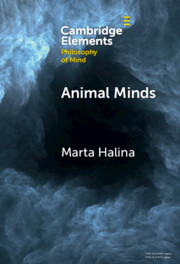Element contents
Animal Minds
Published online by Cambridge University Press: 07 March 2024
Summary
Information
- Type
- Element
- Information
- Series: Elements in Philosophy of MindOnline ISBN: 9781009119962Publisher: Cambridge University PressPrint publication: 04 April 2024
